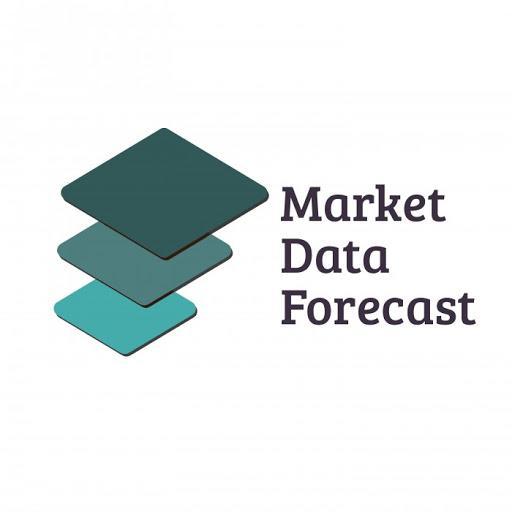ADHD Therapeutics Market
Drivers:
The rising prevalence of attention deficit hyperactivity disorders, even among children, is ascribed to bolstering the growth rate of the market.
- According to the National Institutes of Health, more than 5.3 million Children in the U.S. are suffering from ADHD. Also, it is affecting around 5-7.5% of young people which is a serious concern to get prominent treatment procedures.
The quick adoption of the latest technologies, especially in developed and developing countries, is elevating the growth rate of the market. The healthcare infrastructure is greatly emphasized with the growing support from government organizations. The rising expenditure on healthcare among patients to live healthy and normal lives by appropriately providing quality treatment services even in emerging countries is likely to elevate the growth rate of the ADHD therapeutics market.
In addition, the growing awareness among the public over the availability of various treatment procedures that can cure ADHD through social media influencers or any communication channels is attributed to leveling up the scope of the ADHD therapeutics market.
Rising interest in the development of novel treatment procedures with the growing prominence of advancements in biotechnology and genetic engineering is all set to promote growth opportunities for the market in the coming years.
Restraints:
The cost burden on the patients, especially in low-economy countries, shall act as a barrier for the market to grow. Advanced technological developments come with huge investments that raise the burden on the patient due to the high cost of installation and maintenance of equipment in hospitals or laboratories.
In undeveloped countries, people are less aware of the available treatment options for ADHD, which is also a degrading factor for the market growth rate. In most remote areas, many people are unaware of the neurological disorders that pose a severe threat to children who are suffering from ADHD if left untreated. Also, the penetration of local branded pharmaceutical companies slightly limits the growth rate of the ADHD therapeutics market. Locally branded medicines come with low quality, which implies prolonged side effects.
Segment Analysis:
Treatment by Medication
- Stimulants
- Amphetamines
- Methylphenidate
- Dextroamphetamine
- Dexmethylphenidate
- Non-Stimulants
- Atomoxetine
- Bupropion
- Guanfacine
The stimulants segment is leading with the dominant share of the ADHD therapeutics market. Healthcare providers usually use stimulants to treat ADHD, which is the most common and effective way. Many studies showed that more than 80% of children have resulted in showing only fewer symptoms with correct stimulant medications. Therefore, the demand for this treatment procedure for ADHD is accelerating the growth rate of the market. The non-stimulants segment is deemed to have a significant growth rate in the foreseen years. There are many non-stimulant treatment options available to treat ADHD that are effective and reduce the risk factors appropriately.
Treatment by Psychotherapy
- Behavior Therapy
- Cognitive Behavioral Therapy
- Interpersonal Psychotherapy
- Family Therapy
The behavior therapy segment is ruling with the dominant share of the market. ADHD patients are treated with behavior therapy consistently. Making children learn executive functions like managing time and planning tasks through this treatment method will emphasize the children’s lives to an extent. The rising awareness of ADHD among parents is likely to fuel the demand for family therapy. In the modern era, parents are more likely to give the utmost care to their children despite the cost. Family therapy is specially organized for children suffering from ADHD with a set of rules and routines to sustain specific consequences. The interpersonal psychotherapy segment is likely to gain huge growth opportunities in the coming years.
Treatment by Education or Training
- Parent Management Training
- Social Skills Training
- School-Based Interventions
The parent management training segment is leading with the largest share of the market. Parent management training sessions involve training the parents to make their children reinforce positive behaviors. Social skills training is ascribed to leveraging the growth rate of the market during the forecast period.
Regional Analysis:
North America has been leading with the dominant share of the market for the past few years owing to growing expenditure on proper treatment plans. Increasing prominence for the launch of innovative drugs to treat ADHD, which are getting green flag signals from government organizations like the FDA, especially in the U.S. and Canada, is attributed to leveraging the growth rate of the market in this region.
Asia Pacific is anticipated to hit the highest CAGR by the end of 2029. Growing population and rising awareness through campaigns or digital platforms in most populous countries like India and China significantly level up the growth rate of the market. Europe is likely to have a significant growth rate throughout the forecast period.
Latin America and, the Middle East & Africa are set to have prominent opportunities in the ADHD therapeutics market in the future period.
Recent Market Developments:
In 2024, Tris Pharma, a CMO for Pfizer, received a nod from the FDA to treat ADHD through the non-stimulant Onyda XR. This is the first liquid non-stimulant medication to treat ADHD, which is a nighttime dosing in the indication. This procedure is specially designed for patients who are not adequately responding to stimulant medications. The company is expecting to have a huge expansion of product polio with the launch of these generic drugs to treat chronic illnesses like ADHD among adults and children.
Key Players:
Some of the key market players dominating the global ADHD therapeutics market profiled in the report are Shire plc (Ireland), Neos Therapeutics, Inc. (U.S.), Eli Lilly and Company (U.S.), Pfizer Inc. (U.S.), Alcobra Ltd. (Israel), Supernus Pharmaceuticals, Inc. (U.S.), Noven Pharmaceuticals, Inc. (U.S.), Novartis AG (Switzerland), Johnson & Johnson (U.S.) and Curemark, LLC. (U.S.).



